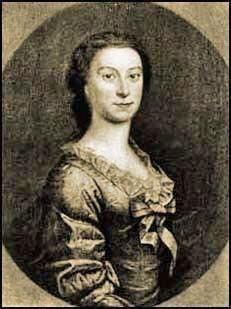|
Cadenus And Vanessa
Cadenus and Vanessa is a poem by Jonathan Swift about one of his lovers, Esther Vanhomrigh (Vanessa), written in 1713 and published as a book in 1726, three years after the death of Vanhomrigh. It contains in its title an anagram and a neologism: ''Cadenus'' is an anagram of the Latin ''decanus'', meaning ‘dean’: Swift was dean of St Patrick's, and known as Dean Swift in the manner of the time. The neologism is '' Vanessa (name), Vanessa'', in secret reference to Esther Vanhomrigh. The name starts with the first three letters of her surname and the first two of her first name. With this poem, Swift created the popular woman's name ''Vanessa''. See also * Vanessa (name) *Esther Vanhomrigh Esther Vanhomrigh or Van Homrigh (known by the pseudonym Vanessa; c. 1688 – 2 June 1723), an Irish woman of Dutch descent, was a longtime lover and correspondent of Jonathan Swift. Swift's letters to her were published after her death. Her ... References External links e-text at ... [...More Info...] [...Related Items...] OR: [Wikipedia] [Google] [Baidu] |
Jonathan Swift
Jonathan Swift (30 November 1667 – 19 October 1745) was an Anglo-Irish Satire, satirist, author, essayist, political pamphleteer (first for the Whig (British political party), Whigs, then for the Tories (British political party), Tories), poet, and Anglican cleric who became Dean (Christianity), Dean of St Patrick's Cathedral, Dublin, hence his common sobriquet, "Dean Swift". Swift is remembered for works such as ''A Tale of a Tub'' (1704), ''An Argument Against Abolishing Christianity'' (1712), ''Gulliver's Travels'' (1726), and ''A Modest Proposal'' (1729). He is regarded by the ''Encyclopædia Britannica'' as the foremost prose satirist in the English language, and is less well known for his poetry. He originally published all of his works under pseudonyms—such as Lemuel Gulliver, Isaac Bickerstaff, M. B. Drapier—or anonymously. He was a master of two styles of satire, the Satire#Classifications, Horatian and Juvenalian styles. His deadpan, ironic writing style, partic ... [...More Info...] [...Related Items...] OR: [Wikipedia] [Google] [Baidu] |
Esther Vanhomrigh
Esther Vanhomrigh or Van Homrigh (known by the pseudonym Vanessa; c. 1688 – 2 June 1723), an Irish woman of Dutch (ethnic group), Dutch descent, was a longtime lover and correspondent of Jonathan Swift. Swift's letters to her were published after her death. Her fictional name "Vanessa (name), Vanessa" was created by Swift by taking ''Van'' from her surname, Vanhomrigh, and adding ''Esse'', the pet form of her first name, Esther. She was fictionalized as "Vanessa" in Swift's poem ''Cadenus and Vanessa'' (1713). In the poem, he wrote: :''Each girl, when pleased with what is taught,'' :''Will have the teacher in her thought.'' Life Esther was the daughter of Bartholomew Van Homrigh, a merchant of Amsterdam and afterwards of Dublin, who was appointed commissary of the stores by King William upon his expedition into Ireland: he was Lord Mayor of Dublin 1697–8. Her mother, also named Esther, was the daughter of John Stone, an Irish commissioner of revenue. She grew up at Celbr ... [...More Info...] [...Related Items...] OR: [Wikipedia] [Google] [Baidu] |
Anagram
An anagram is a word or phrase formed by rearranging the letters of a different word or phrase, typically using all the original letters exactly once. For example, the word ''anagram'' itself can be rearranged into ''nag a ram'', also the word ''binary'' into ''brainy'' and the word ''adobe'' into ''abode''. The original word or phrase is known as the ''subject'' of the anagram. Any word or phrase that exactly reproduces the letters in another order is an anagram. Someone who creates anagrams may be called an "anagrammatist", and the goal of a serious or skilled anagrammatist is to produce anagrams that reflect or comment on their subject. Examples Anagrams may be created as a commentary on the subject. They may be a parody, a criticism or satire. For example: * "New York Times" = " monkeys write" * "Church of Scientology" = "rich-chosen goofy cult" * "McDonald's restaurants" = " Uncle Sam's standard rot" * "coronavirus" = "carnivorous" * "She Sells Sanctuary" = "Santa; shy, l ... [...More Info...] [...Related Items...] OR: [Wikipedia] [Google] [Baidu] |
Decanus
''Decanus'' means "chief of ten" in Late Latin. The term originated in the Roman army and became used thereafter for subaltern officials in the Byzantine Empire, as well as for various positions in the Church, whence derives the English title "dean". History and functions The ''decanus'' was originally the leader of a 10-man '' contubernium'', which consisted of the squad of eight legionaries who lived in the same tent, plus the two support units/servants of the contubernium. The title must not be confused with the ''decurio'', which was a title given to civic officials and to leaders of 30-strong squadrons (''turmae'') of cavalry. ''Decanus'' is equivalent to the rank of the ''dekarchos'' ("commander of ten") in Greek texts. From the 4th century CE the term ''decanus'' became used for palace messengers, particularly those in the service of Roman empresses. ''Decani'' also apparently served as guards at gates, and in the 6th century, John Lydus equates them with the ancient li ... [...More Info...] [...Related Items...] OR: [Wikipedia] [Google] [Baidu] |
St Patrick's Cathedral, Dublin
Saint Patrick's Cathedral ( ir, Ard-Eaglais Naomh Pádraig) in Dublin, Ireland, founded in 1191 as a Roman Catholic cathedral, is currently the national cathedral of the Church of Ireland. Christ Church Cathedral, also a Church of Ireland cathedral in Dublin, is designated as the local cathedral of the Diocese of Dublin and Glendalough. Background Unusually, St Patrick's is not the seat of a bishop, as the Archbishop of Dublin has his seat in Christ Church Cathedral. Since 1870, the Church of Ireland has designated St Patrick's as the national cathedral for the whole of Ireland, drawing chapter members from each of the 12 dioceses of the Church of Ireland. The dean is the ordinary for the cathedral; this office has existed since 1219. The most famous office holder was Jonathan Swift. Status There is almost no precedent for a two-cathedral city, and some believe it was intended that St Patrick's, a secular (diocesan clergy who are not members of a religious order, i.e. ... [...More Info...] [...Related Items...] OR: [Wikipedia] [Google] [Baidu] |
Neologism
A neologism Greek νέο- ''néo''(="new") and λόγος /''lógos'' meaning "speech, utterance"] is a relatively recent or isolated term, word, or phrase that may be in the process of entering common use, but that has not been fully accepted into mainstream language. Neologisms are often driven by changes in culture and technology. In the process of language formation, neologisms are more mature than '' protologisms''. A word whose development stage is between that of the protologism (freshly coined) and neologism (new word) is a ''prelogism''. Popular examples of neologisms can be found in science, fiction (notably science fiction), films and television, branding, literature, jargon, cant, linguistics, the visual arts, and popular culture. Former examples include ''laser'' (1960) from Light Amplification by Stimulated Emission of Radiation; ''robot'' (1941) from Czech writer Karel Čapek's play ''R.U.R. (Rossum's Universal Robots)''; and ''agitprop'' (1930) (a portmanteau of " ... [...More Info...] [...Related Items...] OR: [Wikipedia] [Google] [Baidu] |
Vanessa (name)
Vanessa is a feminine given name. It was invented by the Anglo-Irish writer Jonathan Swift for Esther Vanhomrigh, whom Swift had met in 1708 and whom he tutored. The name was created by taking " Van" from Vanhomrigh's last name and adding "Essa", a pet form of Esther. In 1726, the name Vanessa appeared in print for the first time in '' Cadenus and Vanessa'', an autobiographical poem about Swift's relationship with Vanhomrigh. Swift had written the poem in 1713, but it was not published until three years after Vanhomrigh died. ''Vanessa'' was adopted as the name of a genus of butterfly by Johan Christian Fabricius in 1807. Vanessa was the 71st most popular name for girls born in the United States in 2007. It has been among the top 200 names for girls in the United States since 1953 and among the top 100 names for girls since 1977. It first appeared among the top 1,000 names for girls in the United States in 1950, when it appeared on the list in 939th place. In Germany, Vaness ... [...More Info...] [...Related Items...] OR: [Wikipedia] [Google] [Baidu] |



